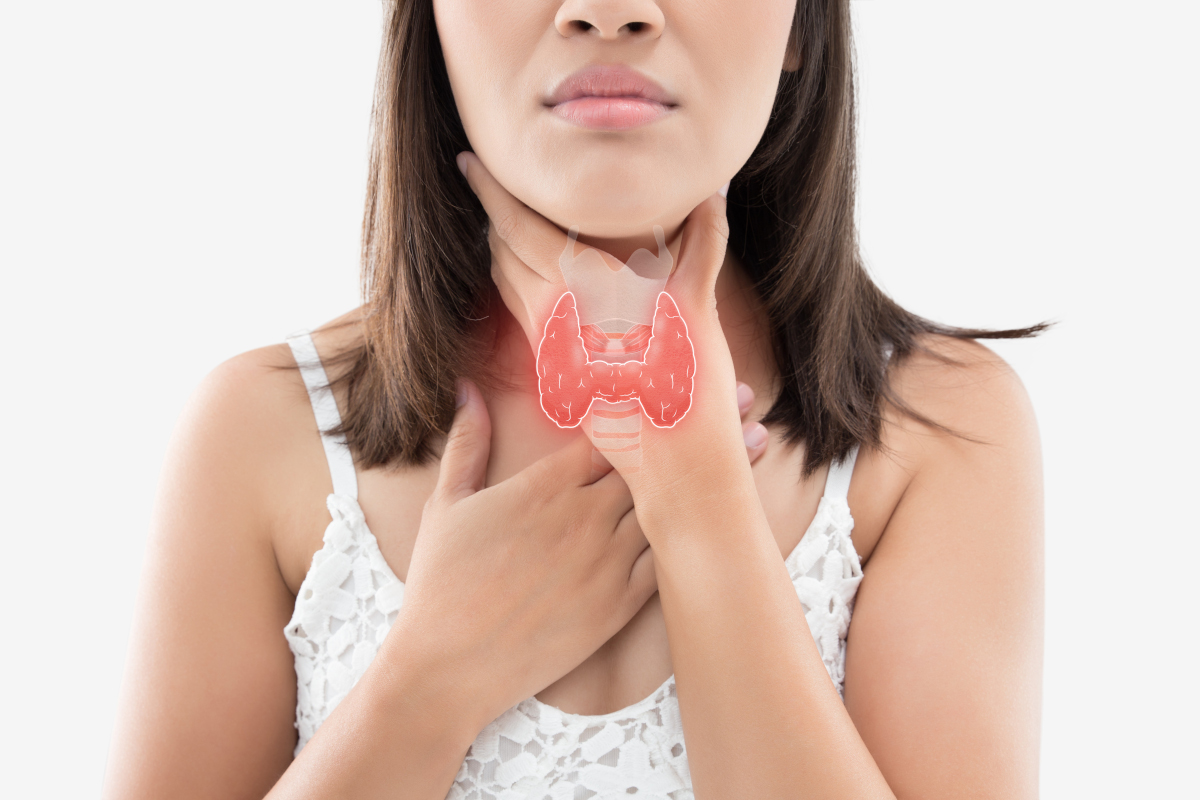Are you suffering from unexplained weight gain or fatigue? Maybe you have increased sensitivity to cold, or suffer from low mood or experience constipation or dry skin, or brittle nails. These are all symptoms that can point to a problem with your thyroid function. When your thyroid doesn't work properly, it can impact yor entire body.
What Does the Thyroid Gland do?
The thyroid gland is a small organ located in the front of the neck, wrapped around the windpipe (trachea). It’s shaped like a butterfly, smaller in the middle with two wide wings that extend around the side of the throat. The thyroid is a gland. You have glands throughout your body which create hormones that help your body do a specific thing. Your thyroid makes hormones that help control many vital functions of your body.
When your thyroid doesn’t work properly, it can impact your entire body.
Your thyroid has an important job to do within your body – releasing and controlling thyroid hormones that control metabolism. Metabolism is a process where the food you take into your body is transformed into energy. This energy is used throughout your entire body to keep many of your body’s systems working correctly. Think of your metabolism as a generator. It takes in raw energy and uses it to power something bigger.
The thyroid controls your metabolism with a few specific hormones — T4 (thyroxine, contains four iodide atoms) and T3 (triiodothyronine, contains three iodide atoms). These two hormones are created by the thyroid and they tell the body’s cells how much energy to use. When your thyroid works properly, it will maintain the right amount of hormones to keep your metabolism working at the right rate. As the hormones are used, the thyroid creates replacements.
This is all supervised by something called the pituitary gland. Located in the centre of the skull, below your brain, the pituitary gland monitors and controls the amount of thyroid hormones in your bloodstream. When the pituitary gland senses a lack of thyroid hormones or a high level of hormones in your body, it will adjust the amounts with its own hormone. This hormone is called thyroid stimulating hormone (TSH). The TSH will be sent to the thyroid and it will tell the thyroid what needs to be done to get the body back to normal.
Two Main Disorders
Thyroid disorders or problems with thyroid function, is a general term for a medical condition that keeps your thyroid from making the right amount of hormones. Your thyroid typically makes hormones that keep your body functioning normally. When the thyroid makes too much thyroid hormone, your body uses energy too quickly. This is called hyperthyroidism. Using energy too quickly will do more than make you tired — it can make your heart beat faster, cause you to lose weight without trying and even make you feel nervous. On the flip-side of this, your thyroid can make too little thyroid hormone. This is called hypothyroidism. When you have too little thyroid hormone in your body, it can make you feel tired and depressed, you might gain weight and you may even be unable to tolerate cold temperatures.
These two main disorders can be caused by a variety of conditions. They can also be passed down through families (inherited). Some of the other main causes include mineral deficiencies or excess of iodine, selenium and zinc, stress, hormonal imbalances and immune dysfunction which results in autoimmune thyroid conditions likes Hashimotos thyroiditis and Graves Disease where the body mounts an attack against the thyroid causing destruction of the thyroid leading to altered thyroid function.
What Can You Do?
Unfortunately thyroid issues are at epidemic proportions especially among women. What can you do if you have a thyroid condition?
In my next article I will be looking at dietary recommendations to help you manage your thyroid condition. In the meantime, as this is one of my areas of specialities in my private practice, if you have any concerns regarding your thyroid condition, please get in contact with me.



